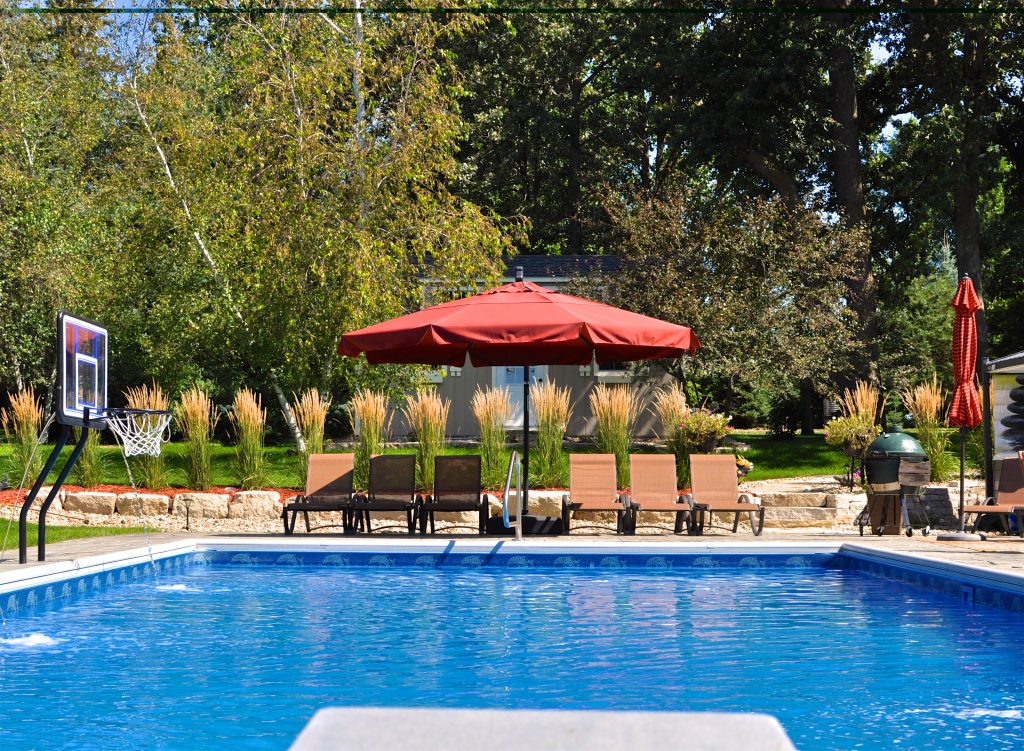The Many Types of Inground Pools: Which Is Best for You?

Residential swimming pools are a big deal. There are over ten million in the USA alone, and demand for them is not dropping. But if you want one for yourself, are you aware that you will have to choose which of the many types of inground pools to install?
This article will help you understand what inground pools are and what the different pool types can offer you. By the end, you should be able to make an informed decision about what you want for your own home.
So read on and learn about your options before you invest.
What Are Inground Pools?
There are several options for the size and shape of a pool you create or commission. Overground pools exist within a container, such as a wooden fence or similar boundary, extending above the ground. Compared to this, inground pools extend into the ground and often have all their electronics hidden underground.
Inground pools allow you to take up less vertical space and more often promote a garden pool aesthetic. They also have a significant effect on your home resale value, often adding an excellent percentage to what you will get on the real estate market.
What Are the Types of Inground Pools Available?
There are three main builds for inground swimming pools. These three pool types each have their benefits and drawbacks.
Vinyl Liner Pool
The most popular pool type is the vinyl liner pool.
Vinyl liner pools are built using panels to create the basic shape. When making this type of pool, you fasten these panels together atop a foundation built out of concrete. Finally, the builder will create a vinyl liner for your pool and use it to cover the entire pool.
This customized vinyl liner prevents the water from affecting the pool’s concrete structure. It also protects the pool’s water from contamination in kind.
The liner secures to a track at the top of the pool to prevent anything from getting between the vinyl liner and the concrete wall. This track surrounds the pool at the edge level, allowing you to remove and clean it if necessary.
Fiberglass Pool
Fiberglass is unlike the pour-and-set of concrete or the panel-based installation of the vinyl lining. Instead, fiberglass pools are most often made in one large piece. A central manufacturer will construct and ship this to you for installation.
These pools are often much more flexible than pools made of concrete. This means they are often the pool of choice for earthquake-prone locations—for example, the West Coast or the central USA.
One of the benefits of fiberglass pools is the short amount of time they need for you to install them. They only need two to four weeks from delivery to a completed installation, but part of this is their size.
Fiberglass pools do not tend towards the larger end and rarely extend past 16 x 40 feet in size.
Concrete and Gunite Pool
Concrete pools are a true sign of luxury. Clients who buy these are often very proud of how their pool looks afterward, and this is due to the many options they have when choosing finishes. Tile is the classiest and most expensive finish you can pick, but a plaster finish still looks respectable.
Commissioners create concrete pools by pouring them into place on-site, using a rebar frame to solidify around. This ensures the pool is hardy and resistant to cracks.
Concrete pools can take up to six months to build depending on their size and can reach from $50,000 to $100,000 to commission. This makes them the priciest pools on the market.
Despite their initial high cost, concrete pools can also be among the most costly to maintain. This is both due to the regularity at which they need maintenance and the cost of materials. They can even cost up to $3,000 per year to maintain, meaning they are a significant investment.
Where Can I Learn More?
You should now have a greater understanding of the different types of inground pools available to you. Although, if you still have questions, our specialists will be happy to discuss you may have about buying one in the Rochester, MN area.
All you need to do is pick up the phone and get in touch. We are happy to help and get you the information you need to get started on a pool of your own.
















